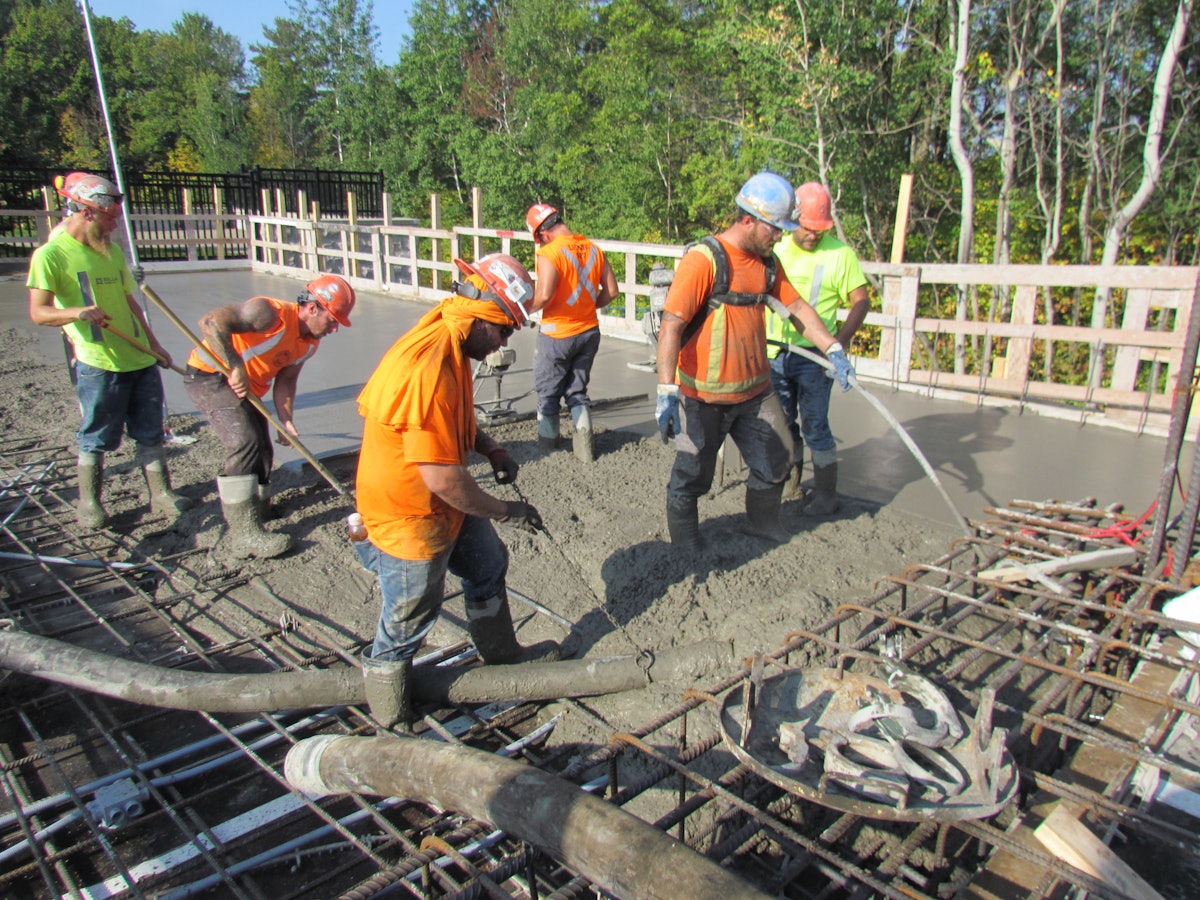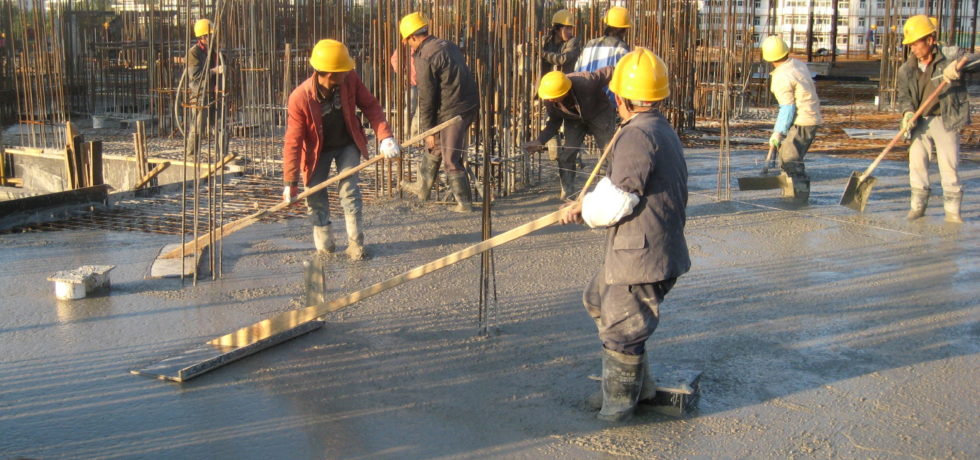A Deep Dive Into Concrete Performance: Exploring West Coast General Engineering Concrete’s Core Advantages
A Deep Dive Into Concrete Performance: Exploring West Coast General Engineering Concrete’s Core Advantages
Blog Article
The Important Function of Concrete Structure in Structural Stability and Durability
When it involves building a residential property, the structure is more essential than you could believe. Concrete structures provide unrivaled toughness and longevity, guaranteeing your structure can hold up against various environmental difficulties. Without a solid base, you risk prospective issues like moving or cracking, which can compromise safety and security and worth. Recognizing the subtleties of concrete structures can be the secret to preserving your investment for many years to come. What should you consider next?
Comprehending the Importance of Concrete Foundations
Concrete structures are essential to the overall stability of any kind of structure, as they provide the necessary support needed to endure numerous loads and environmental problems. When you believe about developing a home or an industrial room, the foundation is the very first thing you should consider. It works as a barrier against dampness, securing your building from water damages. A well-placed concrete structure also protects against settling and changing, which can lead to fractures in wall surfaces and floorings. You'll want to guarantee that the foundation is correctly developed and reinforced, as this influences the long life of your building. Additionally, a solid structure can boost energy performance by reducing air leaks. Bear in mind, disregarding the value of a concrete structure can lead to expensive fixings down the line. Spending in a high quality foundation upfront is important for the stability and durability of your structure.
Benefits of Concrete Structures for Structural Stability
While many factors add to a structure's architectural stability, concrete foundations offer unmatched sturdiness and toughness. You'll value that concrete can endure extreme weather, withstanding both moisture and temperature fluctuations. This strength suggests your framework is much less likely to experience breaking or moving over time, which can compromise its safety.Additionally, concrete's intrinsic weight supplies a solid base, preventing movement during all-natural occasions like earthquakes or floodings. When you select a concrete foundation, you're also selecting reduced upkeep; unlike timber, it will not rot or attract insects, saving you time and money in repairs.Moreover, concrete's fire resistance provides included safety, ensuring your framework can withstand high temperature levels without substantial damages. In general, purchasing a concrete structure indicates you're prioritizing the long-lasting stability and stability of your building, making it a wise choice for any building and construction project.
Typical Kinds of Concrete Foundations
When it pertains to developing structures, recognizing the common kinds of concrete structures can aid you make educated options for your project. The most common kinds include slab-on-grade, crawl space, and complete cellar foundations.A slab-on-grade foundation is a basic, economical option, where a thick concrete piece is poured directly on the ground. This kind functions well in cozy environments, as it lessens heat loss.Crawl area foundations boost the home a little above ground, permitting for ventilation and accessibility to plumbing and electrical systems. This layout can help prevent dampness issues.Full cellar structures use additional living or storage area while giving excellent structural support. They call for even more excavation and are commonly utilized in cooler environments to stop frost heave.
Aspects to Think About When Creating a Concrete Foundation

Ideal Practices for Installing Concrete Foundations
When you're mounting a concrete foundation, correct website prep work is necessary to assure stability (West Coast GE Concrete contractors). You'll likewise need to understand support strategies to enhance strength and durability. Do not forget the healing procedure, as it plays a fundamental role in attaining a solid structure.
Website Preparation Importance
Although it might seem straightforward, correct site prep work is essential for assuring a strong and sturdy concrete structure. Start by removing the location of any kind of debris, plant life, or organic material that could compromise the structure's stability. Next off, assess the soil kind and compaction; you may require to excavate or include products to create a secure base. Level the ground to assure also weight distribution and prevent resolving issues later. Installing correct water drainage systems is likewise vital to stop water build-up, which can weaken the structure with time. Mark out the foundation's dimensions precisely to assist the pouring process. By adhering to these steps, you'll establish the stage for an effective concrete foundation that stands the examination of time.
Reinforcement Strategies Clarified
Once the site is appropriately prepared, the next action in guaranteeing a sturdy concrete foundation involves carrying out effective reinforcement techniques. You should begin by utilizing steel rebar, which offers tensile stamina and helps protect against cracking. Lay the rebar in a grid pattern, making certain it's elevated utilizing spacers to keep appropriate coverage. In addition, take into consideration utilizing wire mesh for extra support, particularly in locations subject to hefty tons. Don't neglect to link the rebar junctions safely with cord. For larger structures, fiber support can enhance sturdiness, minimizing the danger of contraction splits. Constantly comply with regional building codes and standards to ensure compliance. By using these reinforcement strategies, you'll considerably increase your foundation's stamina and longevity, laying a solid foundation for your structure.
Treating Process Basics
To ensure your concrete structure remedies effectively, it's vital to maintain appropriate dampness and temperature level problems immediately after putting. Begin by covering the surface area with a damp burlap or plastic bed linen to preserve dampness. This maintains the concrete hydrated, preventing splits and ensuring toughness. You need to additionally monitor the temperature level; optimal curing problems are in between 50 ° F and 90 ° F. If it's too warm, mist the surface area regularly to avoid rapid dissipation. For winter, consider making use of protecting blankets to preserve heat. Objective for a healing duration of at the very least seven days, as this is essential for ideal strength advancement. By following these ideal methods, you'll boost your structure's longevity and longevity, making certain structural honesty for many years to find.
Upkeep of Concrete Structures for Long Life
To keep your concrete structure solid and long-term, routine evaluations are important. You ought to additionally guarantee effective water drainage options remain in location to avoid water damages. If you find any kind of fractures, resolving them promptly will conserve you from larger troubles i loved this down the line.

Regular Inspections and Evaluations
While normal evaluations and analyses might look like a duty, they're essential for preserving the stability of your concrete foundation. By regularly looking for cracks, changes, or indications of wear, you can capture potential issues before they escalate right into pricey repair work. Seek any kind of water merging around the foundation walkway stamped concrete or uncommon settling, as these can signal underlying issues. It's likewise a good idea to keep track of any type of modifications in your home's structure, like doors that stick or windows that don't open efficiently. Maintaining a record of your inspections helps track modifications gradually, permitting aggressive maintenance. Ultimately, these assessments guarantee your structure remains steady, supporting the durability and security of your entire framework. Do not neglect this vital facet of homeownership!
Effective Drain Solutions
Regular examinations can disclose concerns like water drainage problems that may compromise your concrete structure's stability. To avoid water buildup, assure your seamless gutters and downspouts straight water away from the foundation. Installing French drains can efficiently reroute surface and groundwater, reducing stress on your structure wall surfaces. Furthermore, grading the soil around your home assists assure that water moves away, instead than pooling near your foundation.Consider utilizing sump pumps in locations prone to flooding, as they actively get rid of excess water. On a regular basis examine for obstructions in drainage systems and clear them immediately. You'll secure your structure's honesty and longevity by taking these proactive actions. Remember, reliable drain services are vital for keeping a solid, durable concrete structure.
Trigger Fracture Repair Works
When you observe splits in your concrete structure, addressing them quickly is essential for preserving its longevity. Tiny fractures can quickly evolve into bigger concerns, jeopardizing the architectural integrity of your home. Frequently inspect your structure for indications of damages, such as horizontal or upright fractures. If you spot any type of, do not wait-- repair them promptly. You can use epoxy shots or concrete patching substances, which work for sealing cracks. Always comply with the manufacturer's guidelines and take into consideration getting in touch with a specialist for significant damages. Keep in mind, prompt fixings not only enhance your foundation's toughness but additionally conserve you cash in the long run by stopping more considerable repairs down the line. Keep aggressive, and your structure will continue to be solid and safe and secure.
Dealing With Usual Issues With Concrete Structures
Concrete structures can encounter various issues with time, making it crucial to identify and resolve them promptly. Among the most typical troubles is splitting, which can occur as a result of temperature level fluctuations or settling dirt. If you observe splits, it's necessary to analyze their size and depth; tiny cracks can commonly be secured, while larger ones might need specialist evaluation.Water breach is an additional significant concern. Excess wetness can cause mold and mildew growth and architectural damage. Assurance correct drainage around your foundation to precast concrete reduce this threat. Furthermore, look for indications of shifting or bowing wall surfaces, as this can show underlying issues with your structure's stability.Regular evaluations are basic to capture these problems early. If you find any kind of concerning indications, do not be reluctant to get in touch with a structure professional. By staying proactive, you can keep the stability and longevity of your concrete foundation, assuring your home stays risk-free and protected.
Regularly Asked Concerns
Exactly How Does Dirt Kind Impact Concrete Structure Performance?
Dirt type considerably impacts concrete foundation efficiency. If you've obtained expansive clay, for circumstances, it can create moving and fracturing. Sandy soil might cause settling. Comprehending your soil aids assure a steady foundation.
Can Concrete Foundations Be Fixed if Damaged?
Yes, you can repair damaged concrete foundations. Depending on the level of the damages, techniques like epoxy shot or piece jacking can recover stability. It's best to seek advice from a professional for effective services.
What Is the Typical Lifespan of a Concrete Foundation?
A concrete foundation generally lasts 30 to 100 years, depending upon variables like dirt problems, climate, and maintenance. You'll wish to maintain an eye on it to guarantee it stays in excellent form throughout its life expectancy.
Exist Choice Products to Concrete for Foundations?
Yes, there are options to concrete for foundations, like steel, lumber, and even recycled materials. Each option has one-of-a-kind benefits and drawbacks, so you need to consider your job's particular needs when selecting the ideal material.
How Does Climate Effect Concrete Structure Longevity?
Environment considerably affects concrete foundation resilience (WCGE commercial concrete). Severe temperature levels, moisture, and freeze-thaw cycles can damage the material, causing fractures and structural concerns. You must think about local environment problems when intending your structure to assure long-term performance
Report this page